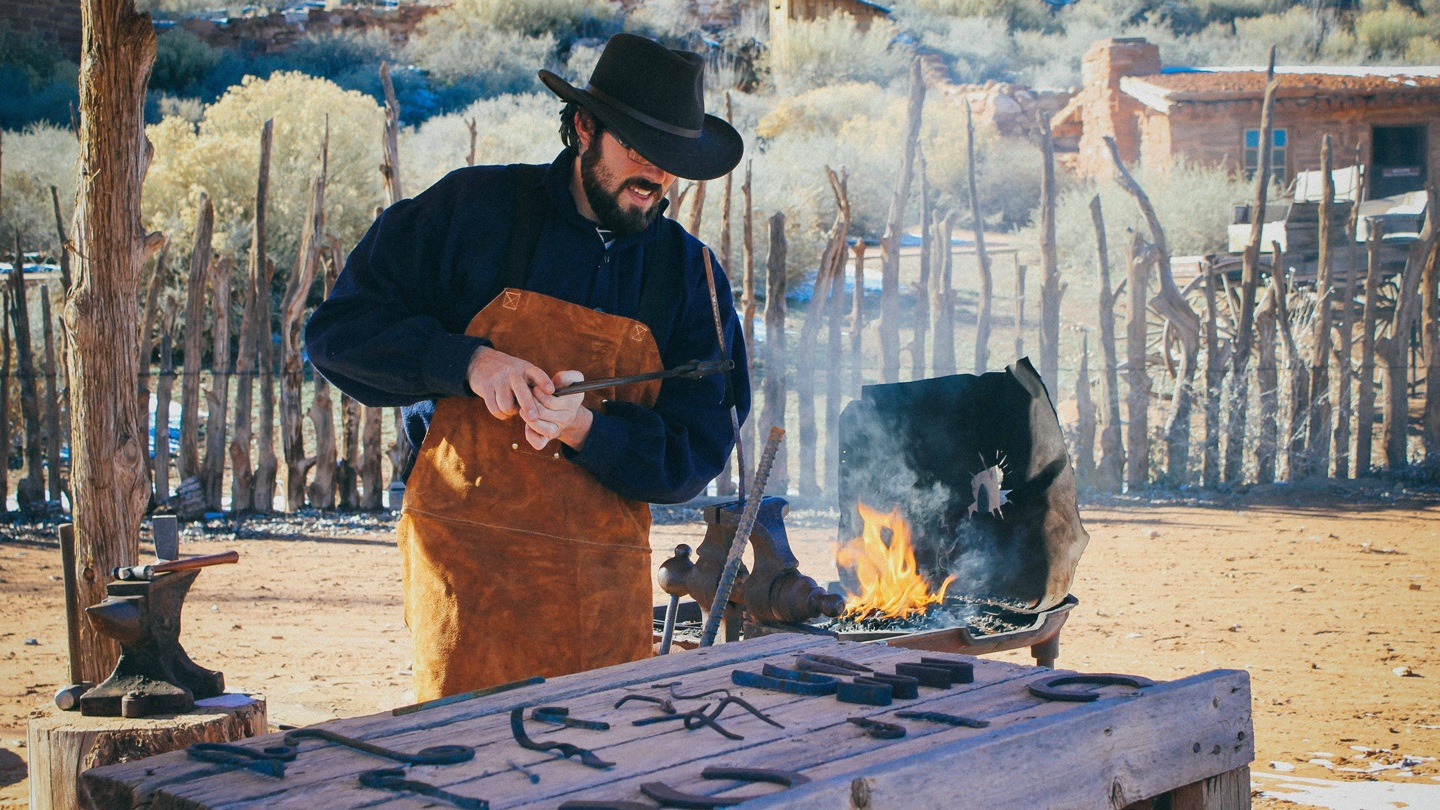Bringing Blacksmith Heritage Back to Pipe Spring
“When I die somebody will come along and kick me in the ribs and say, ‘Get up Joe and go fix my old wagon’.”
-LePRELET JOSEPH HOPKINS, BLACKSMITH DURING CONSTRUCTION OF WINSOR CASTLE, 1870-1872
Blacksmiths are craftsmen with a 3000-year history of hammering iron into usable shapes. In frontier culture, blacksmiths were essential to communities because they built and repaired tools, while also training new apprentices in a heritage trade. At Pipe Spring, the pioneers who settled the fort and ranching operations were dependent upon the local blacksmith to make and repair everyday items such as nails, hinges, door pulls, horse shoes, wagon parts, and kitchen utensils. Due to their essential role as community builders, blacksmith history has been on display for most of Pipe Spring’s time as a National Monument. The current blacksmith exhibit houses an antique coal forge, anvil, and a variety of iron workings.
In past summer seasons, blacksmith demonstrations were offered intermittently at Pipe Spring by local volunteers who were experienced in the trade and brought their own tools to show park guests. Without funding and functional tools, these curated visitor experiences were lost. Starting in 2020, this gift brings tradition back to Pipe Spring by supporting an experienced blacksmith for a six-month summer season. The Blacksmith Ranger would be equipped to provide historic demonstrations for park guests and train other Pipe Spring Rangers and volunteers about forging safety and techniques. This project provides needed funds for repairing damaged blacksmith tools currently on display and finding a working replacement for the 1921 coal forge. It also sets the groundwork for sustainable success by sending educational Rangers to blacksmith training in the neighboring community of Kanab, Utah, where they’ll learn the skills needed to help with demonstrations over the long-term.

